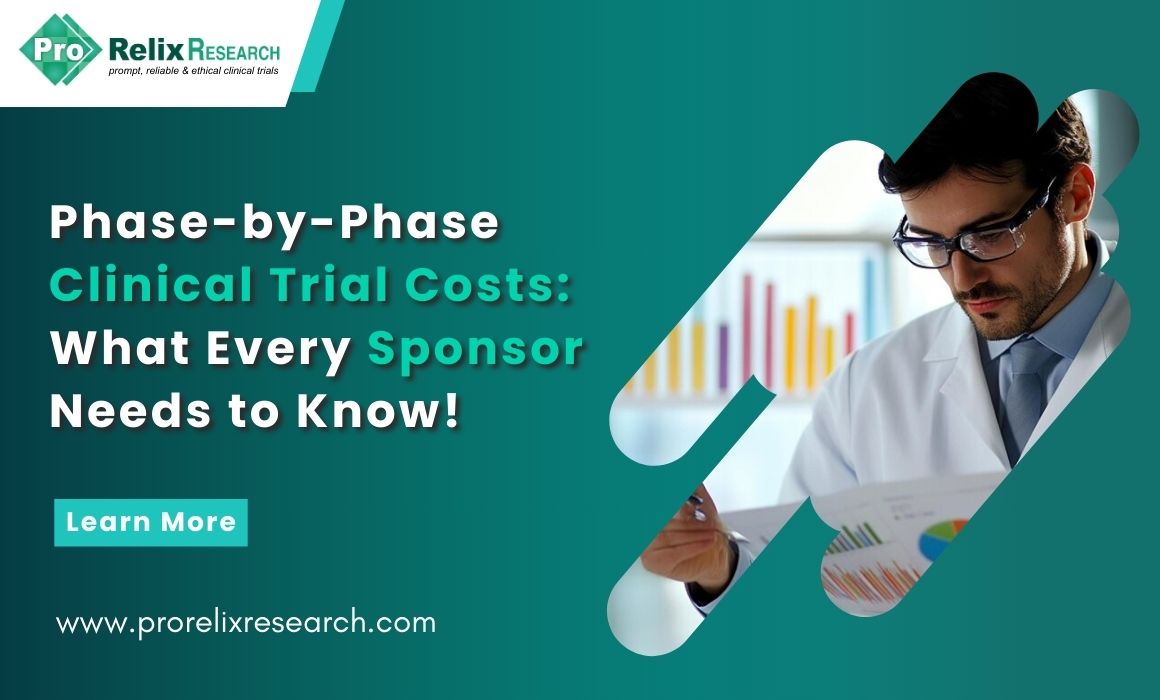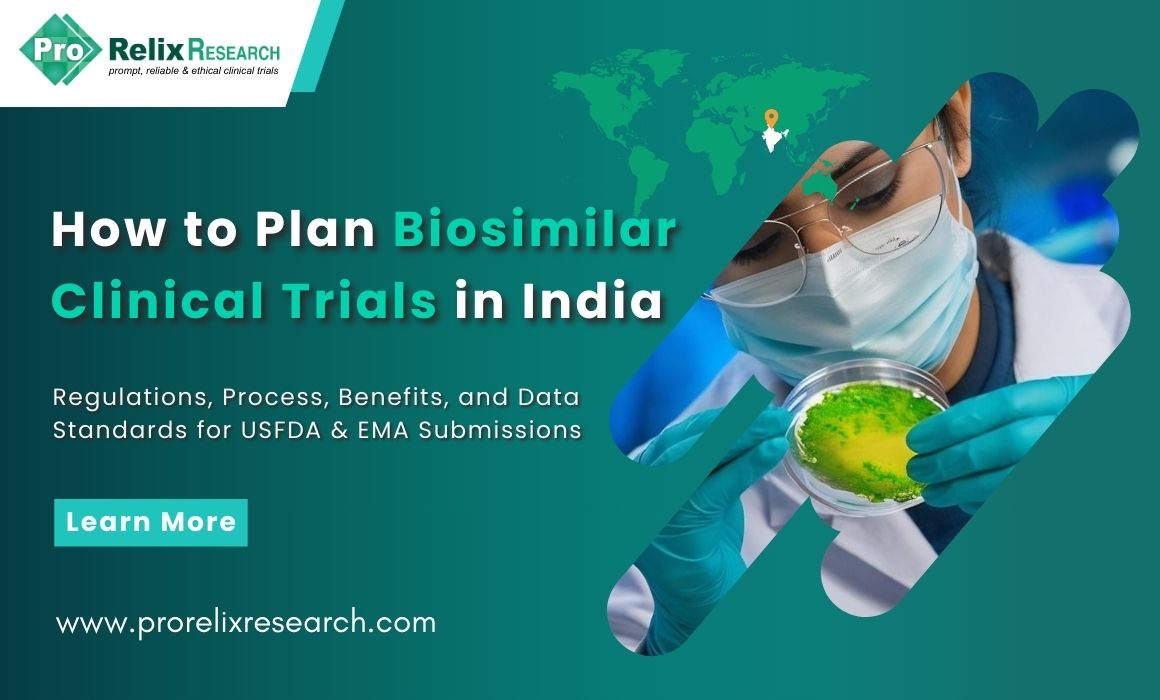This report provides a comprehensive breakdown of clinical trial costs by phase and therapeutic area, with a focus on key cost components including per-patient costs, total costs, CRO fees, and service-specific expenses.
Clinical trials represent one of the most resource-intensive stages in the lifecycle of a drug, biologic, or device. For sponsors, understanding the cost structure of trials by phase, therapeutic area, and CRO services is essential to plan budgets, engage investors, and select outsourcing partners strategically. This detailed analysis consolidates public data, industry benchmarks, and Clinical Research Organization(CRO) cost models to offer actionable insights for sponsors.
1. Clinical Trial Costs by Development Phase
Clinical trial costs increase with each progressive phase of development, with Phase III trials being the most expensive in absolute terms. However, Phase I/II trials often incur the highest per-patient costs due to intensive monitoring and smaller cohort sizes.
Table 1: Average Clinical Trial Costs by Phase
Trial Phase | Avg. Total Cost (USD) | Avg. Enrollment | Avg. Cost per Patient (USD) |
Phase I | $5.26 million | 39 | $136,783 |
Phase I/II | $10.79 million | 71 | $155,340 |
Phase II | $18.49 million | 143 | $129,777 |
Phase II/III | $42.10 million | 300 | $140,344 |
Phase III | $52.84 million | 479 | $113,030 |
Key Points:
- Phase III trials involve large populations, long durations, and multicenter logistics.
- Cost per patient generally decreases with higher enrollment.
- Phase I trials focus on safety and pharmacokinetics, with high complexity per subject.
2. Clinical Trial Costs by Therapeutic Area
Therapeutic area significantly influences cost, with oncology and neurology ranking among the most expensive. Factors include recruitment difficulty, complex endpoints, longer timelines, and advanced diagnostics.
Table 2: Average Per-Patient Costs by Indication and Phase
Therapeutic Area | Phase I ($) | Phase II ($) | Phase III ($) |
Oncology | 152,000 | 130,500 | 124,800 |
Neurology | 158,000 | 139,200 | 122,105 |
Cardiovascular | 135,000 | 127,000 | 121,000 |
Infectious Diseases | 122,000 | 119,500 | 111,100 |
Rheumatoid Arthritis | 145,300 | 128,000 | 121,383 |
Endocrine (e.g. T2D) | 131,000 | 124,500 | 119,241 |
Respiratory | 127,800 | 121,200 | 116,940 |
Dermatology | 110,000 | 104,000 | 99,800 |
Psychiatry | 139,000 | 125,700 | 118,000 |
Key Points:
- Oncology trials are most expensive due to biomarker testing, imaging, and long survival follow-ups.
- Infectious disease trials are more affordable due to high prevalence and shorter timelines.
3. Detailed CRO Service Cost Breakdown
Contract Research Organizations (CROs) are responsible for executing up to 65% of a trial’s scope. Understanding the cost structure of CRO services is critical for budgeting and negotiation.
Table 3: CRO Services and Typical Cost Allocation
CRO Service Component | % of CRO Budget | Notes & Examples |
Clinical Procedures | 15–22% | Labs, imaging, biopsies, ECGs |
Site Monitoring | 9–14% | On-site visits, data verification |
Project Management | 8–12% | Coordination, reporting, oversight |
Data Management | 5–10% | CRF setup, query resolution, database lock |
Biostatistics | 2–5% | Analysis plan, interim/final analysis |
Regulatory Affairs | 5–8% | IND/CTA submissions, IRB communication |
Patient Recruitment | 2–5% | Outreach campaigns, patient databases |
Medical Monitoring | 3–6% | AE/SAE review, medical oversight |
Quality Assurance (QA) | 3–5% | GCP audits, compliance verification |
Legal, Contracts, Insurance | 10–15% | Site contracts, trial insurance |
Key Points:
- Project management, site monitoring, and procedures make up the bulk of CRO costs.
- High recruitment costs occur in rare diseases and oncology.
- CROs charge a margin of 15–25% on top of direct costs, which should be negotiated.
4. Strategic Recommendations for Sponsors
- Plan Phase-by-Phase Budgets: Use benchmarks for cost and enrollment by indication.
- Negotiate CRO Proposals: Request detailed line-item budgets and compare across vendors.
- Optimize Protocol Design: Streamline assessments to reduce burden and procedural costs.
- Use Technology for Cost Savings: Leverage eConsent, remote monitoring, and digital data capture.
- Benchmark Against Historical Data: Utilize per-patient costs across phases and indications.
Conclusion
Clinical trial costs are influenced by numerous factors: trial phase, indication, procedures, and CRO services. Sponsors should arm themselves with granular cost data and service benchmarks to make informed decisions. By aligning trial design with cost expectations and leveraging smart outsourcing, sponsors can accelerate timelines and control budgets without compromising data quality.
References
- ASPE/HHS (2014). Examination of Clinical Trial Costs and Barriers to Drug Development.
- JAMA Intern Med. (2018). Estimated Research and Development Investment Needed to Bring a New Medicine to Market.
- BMJ Open (2020). Cost Analysis of Clinical Trials by Phase.
- NIH ExPORTER Dataset, California Regenerative Medicine Institute Trial Data (2019).






